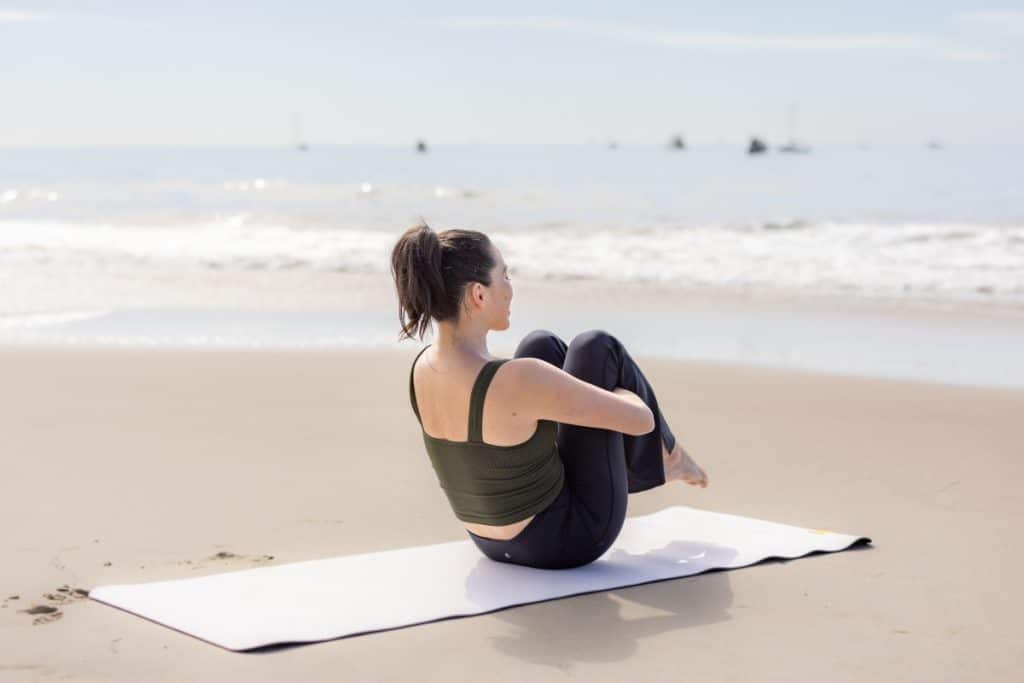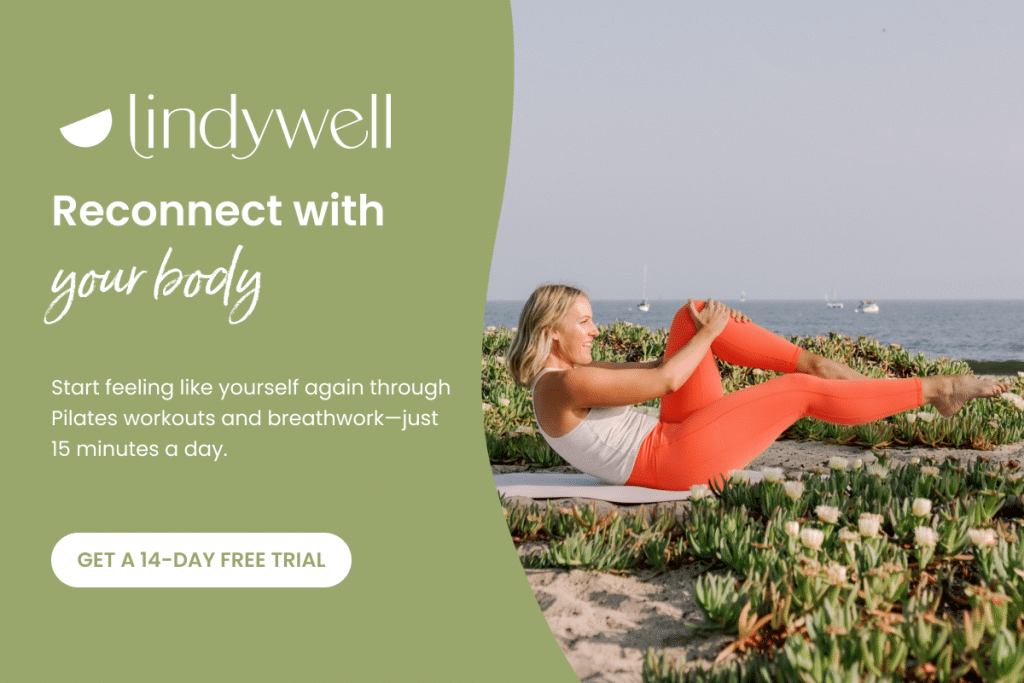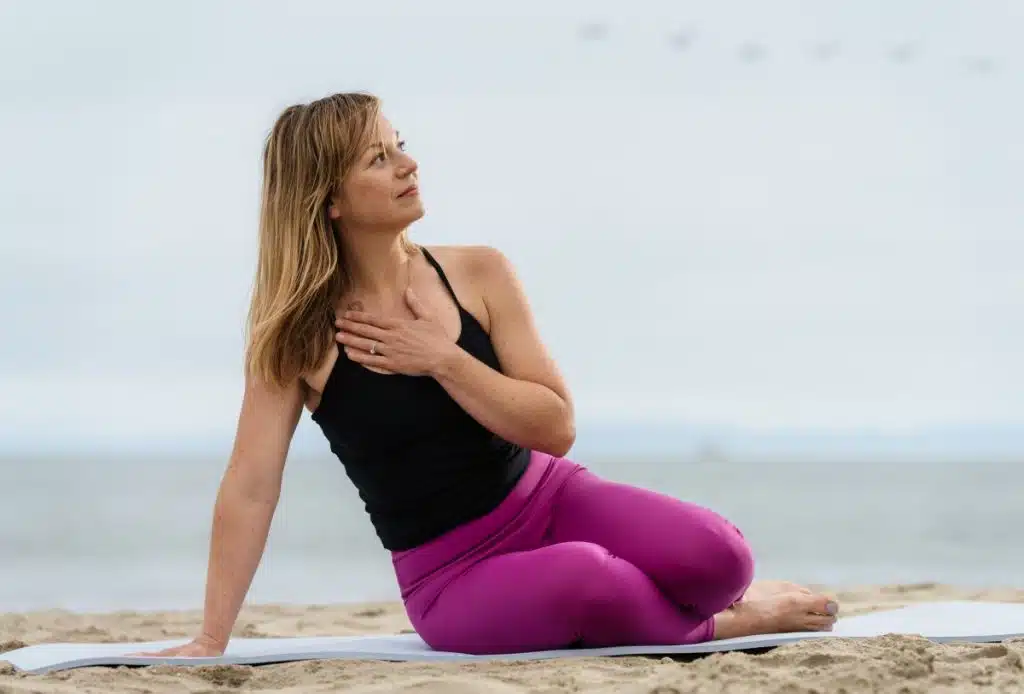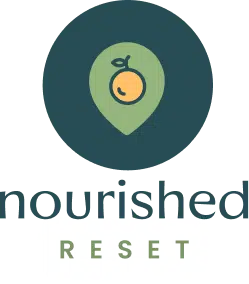
We hear it all the time: slow down and enjoy life. As if it’s so normal and easy to do. The truth is, in our go-go-go culture, this can feel completely unnatural—and hard!
Yet, we do need to slow down. Especially women, 53 percent of whom (in the U.S.) deal with chronic stress. Even worse, only 36 percent get the hours of sleep they require—and we also know sleep is the most crucial and practical way to truly slow down.
We live in a culture where busyness has become a status symbol. Research even found that we perceive those who multitask as highly important and morally virtuous.
This busyness feels inescapable—whether we actually want to cram our schedules or not. I know I feel like I’m often hopping from a Zoom meeting to cleaning and then right out the door to soccer practice for my kiddos. There’s always another commitment to focus on it seems.
The problem is that a frenzied, hectic pace can ultimately lead to burnout which can lead to more damaging health issues. A real-life example of this is my own life. Living that go-go-go lifestyle led to my surprising health diagnosis.
I’ve made a lot of progress over the last few years, but to be honest, I still have a lot of room for improvement. Just recently I had a heart-to-heart with my husband about the pace of life we’re living and how we can make changes to support not only my health but also the whole family. It’s a real challenge and I don’t want to pretend that it’s easy.
Ladies, it’s time for us to slow down. This is a priority for me right now and it’s also one of the primary reasons I wrote my book, Well to the Core. So let’s dive into a few practical steps we can take to finally do this—enjoy life again!

First of All, What Does It Mean to Slow Down?
If the idea of slowing down makes you feel anxious, let’s clear up some misconceptions first. This doesn’t mean you suspend all tasks until further notice. Nor does it mean you should blow off the invitation you accepted a month ago so you can stay home and take it slow.
Slowing down is the practice of being intentional with your time. It’s not realistic or beneficial to just shove your career, personal, and family commitments aside. You can, however, create more room for more spaciousness, mindful awareness, and sheer enjoyment by picking and choosing how you spend your time.
This slower pace will remind you to choose presence over distraction, embrace moments of calm or rest, and breathe in all the beauty life has to offer. Doesn’t that sound like such a relief? (It sounds so lovely to me!)
Interestingly, doing more—and multi-tasking to get it done—isn’t even effective. According to a researcher at the University of Washington, our brains are up to 40 percent less efficient and more prone to errors when we multitask! Add that to the list of things we believe as fact, and yet, has been simply taught to us by modern culture.
Let’s get to the practical steps to slow down and enjoy life.
5 Practical Ways to Slow Down
Mindful awareness creates a deeper sense of meaning and appreciation for the moment you’re living in. So, it’s not surprising that mindfulness can also promote stress management, alleviate depression or anxiety, regulate emotions, and increase life satisfaction overall. Slowing down is a form of mindfulness that you can practice at any time. The following practical (and enjoyable!) techniques will help you reclaim the value of slowness.
1. Create simple, joyful rituals.
Set aside a few quiet moments each day to prioritize whatever brings you bliss—even if it’s only 5 minutes. Here are a few ideas you can do no matter what else is going on in your life:
- Savor your cup of coffee or tea on the patio each morning (while leaving your phone inside!).
- Bask in a luxurious skincare routine at night.
- Burn your favorite candle or incense while practicing a 3-5 minute meditation.
- Do something playful to unleash your inner child.
The goal is to create this space in each day. Remember that it might change from day to day, depending on what you need and what your schedule looks like. All that matters is that you do something that brings you true joy and peace each day.
2. Be intentional with your breath.
Conscious breathwork is a healing somatic practice to reduce stress, ease muscle tension, and calm the autonomic nervous system. As you inhale from the diaphragm, this motion signals the brain to soothe the nervous system’s arousal response, which fosters relaxation and stabilizes intense emotions.
One practical way to prioritize intentional breathing is to set a timer on your phone to go off 2-3 times each day. Think: morning, afternoon and night. When that timer goes off, you stop what you’re doing and take 3 slow, deep breaths. If you’re in the middle of something, snooze the alarm, and come back to it.
You can also simply start and end your day with three deep breaths in bed. It takes less than a minute but gives you a chance to pause, slow, and quiet some of that noise in your head.
3. Immerse yourself in nature.
I have been loving taking a walk every single day—sometimes for 10 minutes and others for 30 minutes or more. I’m not so much worried about how long I go, but more that I simply make the time to do it because it slows me down and makes me feel good.
The best part is, you can do this anywhere, whether on a city sidewalk or through a nearby nature preserve. If you don’t want to walk, or don’t have time, just prioritize being outside:
- Read a book at the local park.
- Start a garden in the backyard.
- Enjoy a restorative Pilates session at the beach. (Lindywell members know we love this!)
- Sit on your patio or front lawn and listen to the birds or watch the people going by.
- Step outside to catch the sunset for a few moments wherever you are.
Not only does this force you to slow down, but it reduces stress. In fact, spending just 10 to 30 minutes in nature can reduce your cortisol levels, blood pressure, heart rate, and other biological stress markers. Such a win-win!
4. Moderate your screen time.
Consider how much time you spend responding to emails, browsing the internet, or checking social media. A lot of this is needed—but it doesn’t mean you can’t cut back. The reality for many of us is that we need our devices to work, plan, and live life. Here are a few practical ways to cut back, even a little:
- Schedule 2-3 times each day to check your email. For example, you might check once in the morning, once mid-day, and once before logging off for the night. This eliminates the back-and-forth of checking each time a notification comes in.
- Set clear digital boundaries for yourself, like no phone for the first hour of the day no screen time after 7pm. You might also try picking one day each week to have no devices at all, like Saturday or Sunday.
- Re-think your evening routine. Lately, I’ve been reading in bed each night Sunday-Thursday and then watch shows after the kids are in bed on Friday and Saturday only. This ritual has helped my sleep and become a rhythm that has helped me to reduce screentime.
- Walk during calls and meetings when you can. I have also been taking as many calls as I can on walks as opposed to sitting in the house. This isn’t always possible, but when video isn’t required, I’m opting back for a good old-fashioned phone call in an effort to take a break from screens and get some fresh air and movement in the midst of my day.
5. Cultivate a gratitude practice.
I did a 30 days of gratitude challenge and it changed my life. While you don’t need to do a specific challenge, though, to reap the benefits—it is important to make this a regular practice. Not only does this encourage you to slow down and enjoy those precious moments you might otherwise overlook—gratitude has many health benefits, including:
- Reduced depression and anxiety
- Improved heart health
- Better sleep
Here’s the thing: you can have a gratitude practice and still be rushing around from thing to thing. Here are a few ideas I’ve truly been living out lately that haven’t been easy:
Mindful Answering: Asking myself “at what cost?” instead of immediately committing to do more and take more onto my plate, I’m making sure to pause and think through the implications of doing so. Are there drawbacks that could impact my ability to slow down and enjoy my life?
If so, I need to consider those thoroughly before saying yes. This applies in terms of work commitments, but also volunteer commitments and even commitments that we make for our kids (such as joining another sports team or RSVP’ing for multiple birthday parties on a given weekend).
Mindful Scheduling: Taking a look at our schedule on a monthly basis and ensuring that after busy stretches, we have weekend of rest as well. We can accidentally pack our weekends and pack our weeks and realize that we didn’t reserve any time in our schedule for downtime. Looking at our schedule in advance helps us to plan for downtime to avoid burnout and future stress.
Embrace a Slower, More Intentional Life with Lindywell
Whether you want to carve out more time for rest, or are craving being more present, consider joining our community here at Lindywell.
As a member, you can access over 350 online Pilates classes, breathwork sessions, nourishing recipes, and other resources to slow down, invest in self-care, and enjoy life. Start a free 14-day trial now and reap the benefits for yourself!







2 thoughts on “5 Practical Ways to Slow Down and Enjoy Life”
“Such a beautiful reminder! In today’s fast-paced world, it’s so important to take a step back and truly enjoy the little moments. Loved your insights on mindfulness and appreciating the present. Thanks for sharing this inspiring post!”
We’re so glad that this resonated for you and hope that you’ll take some time to care for yourself today too. We’re cheering you on!